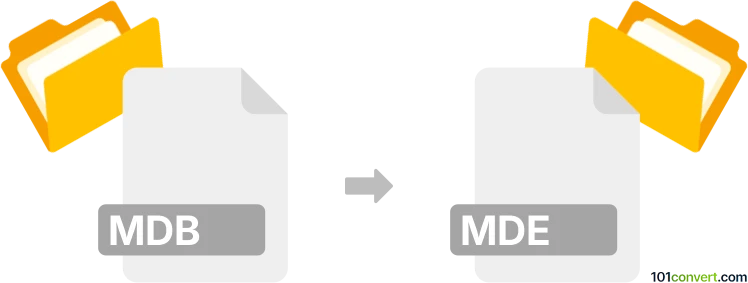Convert MDB to MDE
How to convert MDB to MDE files in Microsoft Access to protect your database code and design.

How to convert mdb to mde file
- Other formats
- No ratings yet.
101convert.com assistant bot
2h
Understanding mdb and mde file formats
MDB (Microsoft Database) is the default file format for Microsoft Access databases up to Access 2003. It stores tables, queries, forms, reports, macros, and VBA code. MDE is a compiled version of an MDB file. When you convert an MDB to MDE, all VBA source code is removed, and only compiled code remains, making it more secure and preventing design changes.
Why convert mdb to mde?
Converting an MDB file to MDE is useful for distributing Access applications while protecting your intellectual property. Users can run the application but cannot view or modify the VBA code or design of forms and reports.
How to convert mdb to mde
The conversion process is straightforward using Microsoft Access. Here’s how:
- Open your MDB file in Microsoft Access.
- Ensure all modules are compiled and there are no errors (use Debug → Compile in the VBA editor).
- Go to Tools → Database Utilities → Make MDE File (in Access 2003 or earlier).
- Choose a location and filename for the MDE file and click Save.
For Access 2007 and later, use Database Tools → Make MDE (or ACCDE for newer formats).
Best software for mdb to mde conversion
The best and most reliable tool for this conversion is Microsoft Access itself. No third-party software can fully replicate the process, as it requires Access’s internal compilation engine. Always use the same version of Access as your MDB file for best results.
Important notes
- Once converted, you cannot recover the original VBA source code from the MDE file.
- Keep a backup of your original MDB file before conversion.
- All users must have a compatible version of Access to use the MDE file.
Note: This mdb to mde conversion record is incomplete, must be verified, and may contain inaccuracies. Please vote below whether you found this information helpful or not.